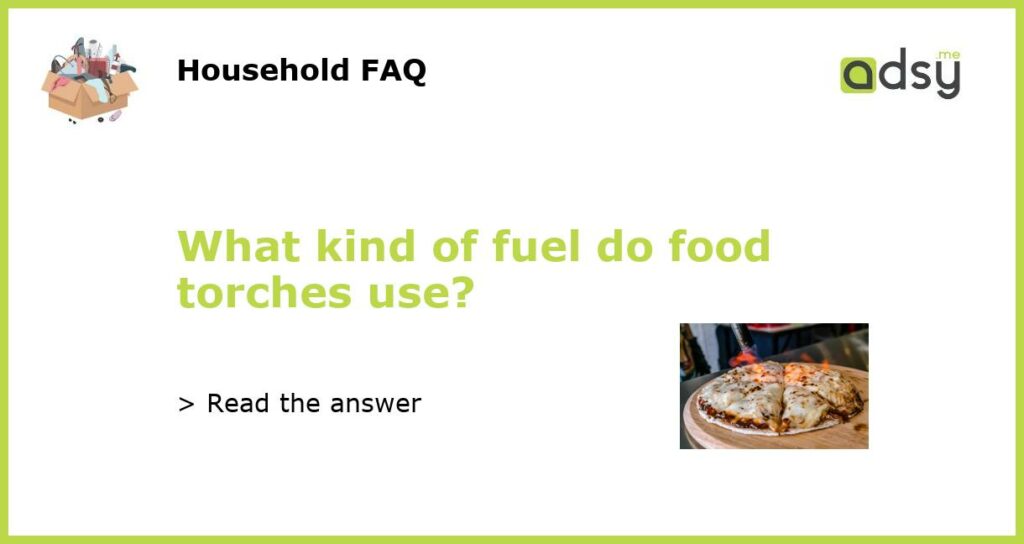Food Torches: A Versatile Tool for Any Kitchen
Food torches have become a popular kitchen tool for both home cooks and professional chefs. These versatile gadgets have numerous uses, from caramelizing sugar on top of desserts to searing meat and fish. But what kind of fuel do they use?
Butane: The Most Common Fuel for Food Torches
The most common fuel for food torches is butane gas. Butane is a highly flammable gas that is easy to find and affordable. It is sold in canisters that can be attached to the torch with a valve that releases the gas when the torch is ignited. Butane has a clean burn, meaning it does not leave behind any residue or odor, making it the perfect choice for use in the kitchen. Butane canisters can be purchased at most hardware stores or online retailers such as Amazon.
Propane: An Alternative to Butane
Propane is another type of gas that can be used in food torches. Although less common than butane, propane is a good alternative if butane is not available. Propane is widely used in outdoor grilling and can be found at most hardware stores or online retailers such asHome Depot. However, propane has a less clean burn and can leave behind a residue, making it less ideal for use in the kitchen.
Refilling Canisters: A Cost-Effective Option
To save money in the long run, some users opt to refill their used canisters instead of buying new ones. Refill kits are widely available and can be purchased at most hardware stores or online retailers such as Walmart. However, it is important to follow the instructions carefully when refilling canisters to avoid any accidents or damage to the torch.
Choose the Fuel That Works Best for You
In conclusion, food torches can use either butane or propane gas as fuel, with butane being the most common and clean-burning option. Refilling canisters is a cost-effective option, but users should be careful when doing so. When choosing a fuel for your food torch, consider the availability, cost, and clean-burning properties of each type to find the option that works best for you and your kitchen needs.






